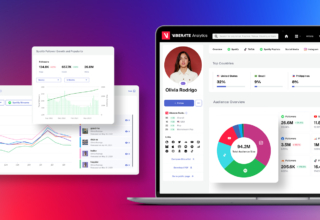
Automatic License Plate Recognition (ALPR) systems are increasingly utilized across various sectors, including law enforcement, traffic management, and commercial enterprises. These systems offer sophisticated means to capture and analyse license plate data efficiently, aiding in operations from security surveillance to traffic regulation. However, the deployment of ALPR technology comes with significant cost considerations that vary based on the system’s complexity, scale, and specific application. This article provides a detailed overview of the factors that influence the cost of ALPR systems and what potential buyers might expect to invest.
Table of Contents
Components of ALPR System Costs
The total cost of an ALPR system encompasses several components, each contributing to the final price:
- Hardware Costs: This includes cameras, servers, and other physical infrastructure necessary to capture and process images. Cameras must be high-resolution and capable of capturing clear images in various lighting and weather conditions, which can be costly. Additionally, the hardware may require regular maintenance and updates.
- Software Costs: ALPR systems require advanced software equipped with optical character recognition (OCR) and other analytical capabilities. The software is the core of the ALPR system, involving complex algorithms that need to be continuously updated and improved.
- Installation and Integration Costs: Installing ALPR systems involves setup fees, including physical installation of cameras and integration of software with existing systems, such as traffic light controls or police databases.
- Training Costs: Personnel must be trained to operate ALPR systems effectively, which can involve significant expenses, especially for large teams or complex systems.
- Maintenance and Support Costs: Ongoing maintenance is crucial for ensuring the reliability and accuracy of ALPR systems. This includes software updates, hardware repairs, and possibly ongoing support from the system provider.
Pricing Models
ALPR system providers typically offer various pricing models to accommodate different needs and budgets:
- Purchase Model: This model involves a one-time purchase price for the hardware and software, plus installation. This can be expensive upfront but may reduce long-term costs since the buyer owns the equipment and software outright.
- Subscription Model: Some providers offer ALPR as a service, where the cost is spread over monthly or annual subscriptions. This model often includes maintenance, support, and software updates, providing a more manageable expense over time but potentially higher total cost in the long run.
- Hybrid Model: A combination of purchase and subscription, where the buyer purchases the hardware but pays a recurring fee for software updates and support.
Average Costs
The costs of ALPR systems can vary widely based on the factors mentioned above. Here are some general pricing guidelines:
- Small-scale Systems: For small businesses or lower-traffic areas, smaller systems can range from $10,000 to $25,000.
- Medium-scale Systems: Municipalities or medium-sized businesses might expect costs between $30,000 and $100,000, depending on the number of cameras and the complexity of the software.
- Large-scale Systems: For city-wide deployments or large commercial applications, costs can exceed $200,000, especially when high numbers of cameras and extensive integration are required.
Additional Considerations
When considering the cost of an ALPR system, it’s also important to evaluate the potential return on investment (ROI). For law enforcement, the use of ALPR can lead to significant savings in manpower and an increase in recovered stolen assets. For traffic management, improved flow and reduced congestion can lead to broader economic benefits.
Investing in an Automatic License Plate Recognition system involves consideration of various costs, from upfront purchases and installations to ongoing maintenance and training. While the initial expenditure can be significant, the long-term benefits enhanced security, improved traffic management, and potential revenue generation can justify the investment. Prospective buyers should carefully assess their specific needs and budget constraints to choose the most cost-effective ALPR solution.

















